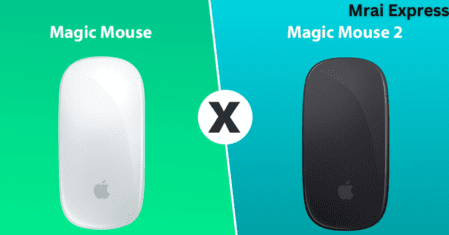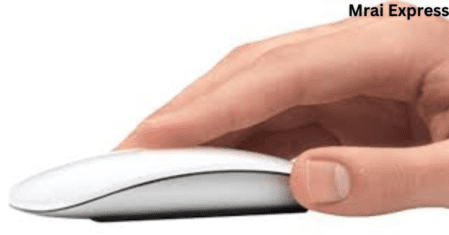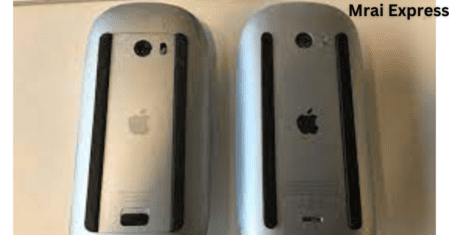As the names of the products suggest, navigating the Magic Mouse and Magic Mouse 2 differences shouldn’t be so confusing. If you’re wrestling with the choice of which mouse to coordinate into your work process, this article demystifies the Apple mice situation. Filtering through the major differentiations and upgrades, we uncover what separates them, empowering you to pursue a decision that best suits your inclinations.
Key Takeaways
- The Magic Mouse 2 refines the plan and usefulness of the first Sorcery Mouse by being lighter and consolidating an underlying battery-powered battery, however holds the series’ moderate tasteful and absence of ergonomic elements.
- The Mrai Express Case is a secondary selling embellishment intended to improve the ergonomics of both the Magic Mouse 1 vs 2, offering a superior grasp and a more regular hand position, which can mitigate inconvenience from delayed use and fit the two ages without settling on plan or usefulness.
- While the first Magic Mouse utilizes replaceable AA batteries, the Magic Mouse 2 has an implicit battery-powered battery with fast charging capacities, even though its charging port situation has been condemned for forestalling use during charging, standing out from the adaptability of the first mouse’s replaceable batteries.
Changing Design and Construction: Magic Mouse Beginnings to Introduce

The Magic Mouse series’ design and construction have changed over time. The first Magic Mouse generation, which was released in 2009, was praised for its flat and minimalist design, keeping Apple’s trademark low-profile design philosophy. The second-age Magic Mouse, presented in 2015, further refined this plan, progressing from an aluminum body to consolidating an underlying battery-powered battery, while holding the aluminum contact.
This change brought about the Magic Mouse 2 being essentially lighter than its ancestor, weighing around 90 grams, improving the client experience notwithstanding the absence of express ergonomic plan highlights in the two models.
The First Magic Mouse: Aluminum and Optical Sensor

The original Magic Mouse:
- Developed from aluminum
- Offered a top-notch feel and strength
- Featured a simple design and a flat shape
- Stressed effortlessness and a smoothed-out appearance
- Instrumental in establishing the vibe for the future of Apple’s mouse design
The aluminum development joined with the level shape made the first Magic Mouse stand apart among its counterparts. This plan, while moderate, was a demonstration of Apple’s imaginative methodology towards its item plan and client experience.
The Magic Mouse 2’s Refined Touch
Apple immediately jumped all over the chance to refine the first Magic Mouse’s Design and work with the presentation of the Apple Magic Mouse 2. The Magic Mouse 2 is remarkably lighter, offering an improved client experience. The stylish addition of a rechargeable battery, which eliminates the requirement for disposable cells, was one of the significant updates.
The Magic Mouse 2’s improved stability is made possible by its smoother glide, which is made possible by its lighter weight. This refined touch to the Magic Mouse 2 makes it a more easy-to-use device, adding to the solace and comfort of utilizing an Apple item.
Adding Value to the Experience: Presenting the Mrai Express Case

While the Magic Mouse 1 and 2 have gone through critical enhancements in design, weight, and usefulness, one angle that stays neglected is ergonomic solace during delayed use. The Mrai Express is an important step toward improving the user experience. Intended to supplement the smooth, moderate stylish of the Magic Mouse series, the Mrai Express regards the mouse’s notable plan as well as lifts the solace level.
The objective of the Mrai Express Case is to:
- Reduce the common discomfort that results from using a device with a low profile for an extended period
- Work on the hold and advance a more regular hand position
- Enhance the mouse’s comfort and functionality
And the finishing touch? The Mrai Express Case is easy to put on and take off, and it fits snugly without interfering with the mouse’s glide bars or its overall functionality.
A Quick Way to Feel Better?
The Mraiexpress Case is much more than just an accessory for your Magic Mouse. It’s a fast answer for clients looking for ergonomic help. The case can be connected to the Magic Mouse in under three seconds, offering prompt solace enhancements. After attaching the Mrai Express Case, users have reported longer work sessions, indicating its effectiveness in reducing wrist and hand discomfort.
Notwithstanding ergonomic advantages, the Mrai Express Case additionally offers better treatment than the Magic Mouse. The raised palm region is a smart plan include, pointed toward decreasing hand exhaustion during broadened use. This element, alongside the better-taking care it gives, adds to a more agreeable utilization of the Magic Mouse.
Similarity Across Generations

The similarity of the Mrai Express Case stretches out to both the first and second ages of the Apple Magic Mouse. This component makes it a flexible expansion to any Magic Mouse client’s arrangement, upgrading solace during expanded use.
The Mrai Express Case highlights:
- Lightweight, ergonomic lodging produced using excellent plastic
- Adds insignificant load to the Magic Mouse, keeping up with its lightweight element
- Ideal fit for the Magic Mouse, improving solace without compromising usefulness or feel
Controlling Your Mouse: Lifespan of the Battery and Charging Solutions
The Apple Magic Mouse series has made a significant shift from using rechargeable AA batteries to using a built-in rechargeable lithium-ion battery. The battery-powered battery in the Magic Mouse 2 regularly endures between 3 to 5 years and supports around 500 to 1000 charge cycles.
The following features are available on the Magic Mouse 2:
- Speedy charging abilities: With just two to three minutes of charging, you can get up to nine hours of battery life
- Full charge in just two hours
- After a full charge, the battery lasts for about a month
The effective design of the battery compartment, which can accommodate both disposable and rechargeable batteries, enables users to enjoy extended use without frequently recharging these features.
Rechargeable vs disposable: A Change in Comfort
The Apple Magic Mouse 1 is filled with replaceable AA batteries, as often as possible requiring replacement every 1 to 2 months depending on use. When batteries ran out, this method gave users the flexibility to quickly replace them.
Apple switched to a built-in rechargeable battery system with the Apple Magic Mouse 2, eliminating the need for battery replacements. While certain clients value the accommodation of the battery-powered framework in the Magic Mouse 2, others miss the adaptability of rapidly trading out batteries as was conceivable with the Magic Mouse 1.
Charging Port Position: A Design Debate
The plan of the Magic Mouse 2 integrates the Lightning charging port on its underside, which has prompted an outstanding debate. The situation of the Lightning port at the lower part of the mouse implies it can’t be utilized while it is charging. The end result of this design choice is a user experience in which functionality is disrupted each time the mouse needs to be charged.
In summary, the choice to find the charging port on the Magic Mouse 2’s underside has been generally censured for making the mouse unusable during charging meetings. Regardless of this, the Magic Mouse 2’s speedy charging abilities and long battery duration fairly make up for this plan blemish.
Navigating macOS: Multi-Contact Surface and Motion Backing
The multi-touch surface of the Apple Magic Mouse and the Magic Mouse 2 both provide support for a variety of Magic Mouse gestures that are based on gestures. In the macOS environment, this functionality has a significant impact on user interaction and productivity. Clients can play out an optional snap by tapping on the right half of one or the other rendition of the Magic Mouse or by tapping with two fingers. Savvy zoom is actuated on the Magic Mouse by twofold tapping with one finger, upgrading the route inside applications.
On both versions of the Magic Mouse, swiping between full-screen applications requires two fingers, whereas swiping between pages in a browser can be done with one finger. Looking over flawlessly on different surfaces and raising Mission Control with a twofold tap of two fingers are essential for the natural communications empowered by the multi-contact surface.
Swipes and Gestures: The Multi-Touch Revolution
The original Magic Mouse’s introduction of multi-touch surface technology revolutionized computer-user interaction. Multi-contact usefulness on the first Apple Magic Mouse permitted clients more signal controls without actual buttons. A portion of the multi-contact capabilities accessible on the first Magic Mouse were:
- Pinch to zoom
- Swipe to move between displays
- One-finger scrolling
- Right-clicking
- Smart zoom
These multi-contact signals furnished clients with a more instinctive and liquid method for exploring their work area conditions and applications. It was a transformation as far as client PC communication, utilizing Apple devices much more charming and productive.
Enhanced or Status Quo?: Assessing Magic Mouse 2’s Gesture Updates
As it straightforwardly influences collaboration with macOS, motion support turns into a critical element for Magic Mouse clients. The Magic Mouse 2 is acquainted with the capacity to swipe between full-screen applications utilizing two fingers, as well as integrating Power Contact innovation for upgraded responsiveness.
Except for this feature, the gesture functions of the Magic Mouse 2 did not see any significant changes from the original Magic Mouse. Generally speaking, the motion refreshes in Apple Magic Mouse 2 proposition a minor improvement, including:
- Using two fingers, swipe between pages
- Look with one finger
- With two fingers, you can zoom in and out
- Pivot pictures with two fingers
The current state is largely maintained by these updates.
Availability and Similarity: Integration with Apple devices seamlessly
For wireless connectivity, the Apple Magic Mouse series utilizes Bluetooth, empowering consistent reconciliation with Apple devices including iMac, Macbook Mini, and Macbook Pro. When a new Mac is included with the Magic Mouse, it is pre-paired with that Mac and will automatically connect when it is turned on. Before pairing with the new device, the Magic Mouse must first be unpaired from the previous one to connect it to an iPad or switch between devices.
This consistent incorporation with Apple devices makes the Apple Magic Mouse, the Apple Magic Trackpad, and the Magic Keyboard flexible apparatuses for clients, permitting them to:
- Switch between devices easily, in any event, while utilizing a Magic Trackpad.
- Effortlessly navigate through various applications and screens.
- Make a variety of gestures for quick and easy actions.
Apple products are more user-friendly because of this feature and the other Magic Mouse series enhancements.
Bluetooth Connection: To Today From El Capitan
A woven USB-C to Lightning Cable is provided with the Apple Magic Mouse for pairing and charging. Connecting to Macs with USB-C or USB ports is made easier by this. The Bluetooth matching interaction for the Magic Mouse has been smoothed out throughout the long term, making it more straightforward for clients to set up their mouse with their Mac, whether it’s a Macbook Pro, MacBook Mini, or iMac.
To coordinate a Magic Mouse with an iPad, the mouse should be set to revelation mode and afterward chosen from the iPad’s Bluetooth settings.
The Apple Magic Mouse’s ease of use has improved since its initial setup with macOS El Capitan. This simple pairing process continues today.
Improved Foot Design: Tracking on Multiple Surfaces
The Magic Mouse’s optimized foot design affects performance tracking across desk surfaces. The Magic Mouse might show the following irregularities on wooden surfaces with a finished grain design, bringing about faltering or slack during use.
The Magic Mouse mustn’t chip away at glass, even matte glass. This can be somewhat of a setback for those with smooth, current glass work areas, however, dread not – therefore an excellent mousepad becomes fundamental. For suggestions on the best mousepads for your Magic Mouse, look at our determinations here.
The Decision: Making an Informed Decision
The Magic Mouse 2 offers enhanced features and enhanced functionality in comparison to the original Magic Mouse, despite sharing many design similarities. Users who value convenience may prefer the original Magic Mouse, which requires batteries that can be changed quickly. Interestingly, the Magic Mouse 2 incorporates a battery-powered battery framework, offering a more economical and helpful arrangement.
Personal preferences regarding design, charging convenience, and overall priorities frequently guide the final choice between the Magic Mouse 1 and 2. Whether you seriously love the first Magic Mouse or lean toward the refreshed Magic Mouse 2, the expansion of the Mrai Express Case can altogether upgrade your experience by resolving the ergonomic issues of the Magic Mouse series.
Summary
All in all, both the Magic Mouse 1 and Magic Mouse 2 proposition a consistent client experience with their moderate plan, multi-contact motion support, and consistent reconciliation with Apple devices. The Magic Mouse 2 makes it a stride further with its battery-powered battery framework, lighter weight, and improved plan. Nonetheless, the two models need ergonomic solace during delayed use, an issue tended to by the imaginative Mrai Express Case. In the end, your preferences and requirements will determine which option is best for you.
FAQS
Does Apple have Magic Mouse 3?
Although the second-generation Magic Mouse includes a USB-C to Lightning cable and has undergone evolutionary design modifications since 2009, there is no Magic Mouse 3 product available from Apple. More information about the Magic Mouse 3 can be found here, including the most recent news and expectations: Date for Magic Mouse 3’s release.
Is it worth getting Magic Mouse 2?
Indeed, the Magic Mouse 2 merits getting, particularly for those looking for a moderate and reduced mouse, as it is sturdy and fits in a PC pocket. In any case, on the off chance that you favor a trackpad, that could be a superior choice.
What is the difference between Magic Mouse 3 and 2?
The contrast between the Magic Mouse 2 and 3 is that the Magic Mouse 3 is only a misnomer, and the main change is the new link it accompanies.
What is the difference Between Magic Mouse 1 and 2?
The primary distinction between Magic Mouse 1 and 2 is the power source. The Magic Mouse 2 has a built-in rechargeable battery that can be charged through a Lightning cable, whereas the original Magic Mouse relied on AA batteries that could be changed out.
Does the Magic mouse function on glass?
No matter how textured they are, glass surfaces are incompatible with the Magic Mouse.
